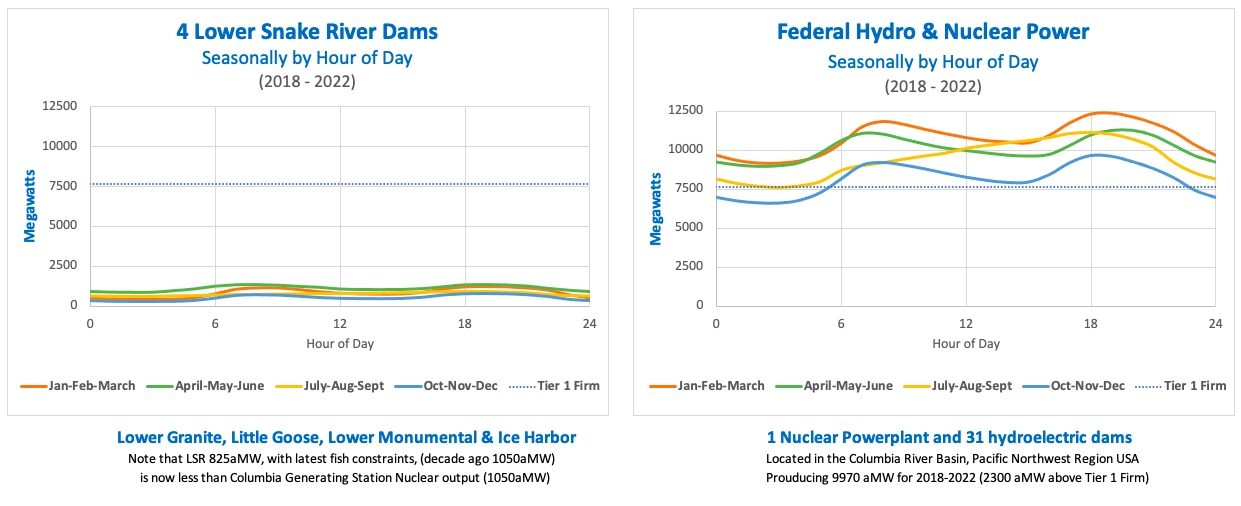forum
library
tutorial
contact

US Needs to Make Full Use of
Its Hydropower Resources, says APPA
by Staff
Intl. Water Power & Dam Construction, March 16, 2023
|
the film forum library tutorial contact |

|
US Needs to Make Full Use of
by Staff
|
Corwin noted that although it makes up only 7% of energy capacity nationally,
hydropower provides almost 60% of the capacity in the Northwest.
 The US should make full use of its hydropower resources in order to ensure its grid remains reliable and resilient, and allow utilities to meet emission reduction goals, the American Public Power Association (APPA) has suggested.
The US should make full use of its hydropower resources in order to ensure its grid remains reliable and resilient, and allow utilities to meet emission reduction goals, the American Public Power Association (APPA) has suggested.
APPA made the comments in a Statement for the Record submitted for a House hearing on March 8 - "Benefits and Access: The Necessity for Multiple Use of Water Resources," held by the House Natural Resources Committee's Subcommittee on Water, Wildlife, and Fisheries.
APPA pointed out in the statement that hydroelectric generators can be started or stopped quickly, making them responsive than most other energy sources for meeting demand for electricity at peak volume.
Hydropower's "black start" capability "makes it especially valuable in restoring power when there are widespread outages or disruptions on the system- this capability allows the generating units to cycle back on quickly if they have been tripped off in a power outage," APPA said.
APPA also highlighted the benefits of the federal power marketing administrations - the Bonneville Power Administration, Western Area Power Administration, Southwestern Area Power Administration and Southeastern Power Administration.
In accordance with federal law, PMA rates are set at the levels needed to recover the costs of the initial federal investment, plus interest, in the hydropower and transmission facilities.
The PMAs annually review their rates to ensure full cost recovery. None of the costs are borne by taxpayers, APPA noted. Power rates also help to cover the costs of other activities authorized by these multipurpose projects, such as navigation, flood control, water supply, environmental programs, and recreation.
Included among the panelists at the hearing was Scott Corwin, Executive Director, Northwest Public Power Association.
Corwin noted that although it makes up only 7% of energy capacity nationally, hydropower provides almost 60% of the capacity in the Northwest and almost 90% of the capacity used by Northwest Public Power Association members that have contracts with the federal power marketing administrations.
He said that non-federal hydropower is "subject to an often arduous and lengthy licensing and permitting process" involving multiple federal agencies and other interests. "The average time to license a project is seven years and costs three and a half million dollars in paperwork -- not counting any environmental or safety or other upgrades."
Corwin pointed out that it took less time to renew Energy Northwest's license for its 1200MW nuclear plant than it did for an Energy Northwest 27MW hydro project. "Without change to these unpredictable timelines and costs there is very serious risk of abandonment of projects," he said.

"We support the legislative proposals that would improve the hydropower permitting process and we also support creating a level playing field in tax policy for existing hydropower to receive the treatment similar to other renewable generation," Corwin said. "The bottom line is we need hydropower because it is efficient, clean, reliable and relatively low cost and, most importantly, because it's flexible -- it can be adjusted quickly to changes in demand."
Corwin also said that hydropower plays a critical role in the Western Interconnection for grid resilience. Though it's only 10% of the total generation for the California Independent System Operator, hydropower provides up to 60% of CAISO's spinning reserves, he noted.
"Hydropower was there when needed during last summer's heat waves in the Northwest and in California," Corwin said, noting that the four lower Snake River dams provided more than 1000MW of energy production and reserve capacity while maintaining flows for juvenile fish migration.
A study conducted for the Public Power Council showed that losing the generation from those four dams would "increase the risk of shortage events in the Western grid, which is already concerned about resource adequacy and increased risk of rolling blackouts, and would cost energy consumers about $790 million per year in added costs," he said.
Related Pages The Preferred Alternative by Staff, Intl. Water Power & Dam Construction, 5/20
learn more on topics covered in the film
see the video
read the script
learn the songs
discussion forum
